Eating Customs: Cultural Differences in Table Setting and Etiquette
Where do knives and forks go in relation to the plate? Which hand do you eat with? How do eating customs in different countries differ from each other?
Cultural differences among people from different countries aren’t always earth shaking. They can be small and subtle as well. Consider, for example, how we set the table and how we eat.
As an American, I was taught to put the fork on the left side of the dinner plate. The napkin either goes under the fork or to the left of it. The knife goes on the right side of the dinner plate with the cutting edge pointing toward the plate. The spoon (if present) goes to the right of the knife.
If you are in a more formal restaurant or hosting a formal dinner with multiple courses, you simply add more forks to the left of the dinner plate and more knives to the right. The glasses (for wine and water) are placed to the right of the plate, above the knives.
If there is a special plate for bread, it is placed to the left of the dinner plate, either to the left of the fork or above it.
Yet in reality there is no intrinsically right way for human beings to set the table or to eat.
I started thinking about this in particular last May when two good friends from Austria visited my husband and me in Ireland. Both of them were eager to help wherever they could and often volunteered to set the table. When they did so, they put the napkin to the right of the plate and placed both the fork and knife on top of it in no special order.
As an American, I was also taught to hold the knife in my right hand and the fork in my left hand when cutting a piece of meat or potato or some other large piece of food. After accomplishing this, I was to put the knife down on the plate and transfer the fork to my right hand to eat. My left hand was to go in my lap—and god forbid my elbows should ever touch the table!
Because Americans only use the fork to eat with, it can get a bit dicey toward the end of a meal when bits of food—like peas perhaps—are rolling around on the plate and hard to scoop up with just a fork. I’m sure Emily Post, the grande dame of etiquette in the U.S., would have frowned greatly on help from a surreptitious finger, but I have been known to resort to such a scandalous action!
Europeans, of course, are taught to hold the knife in the right hand and the fork in the left hand throughout a meal. This means they eat food with their left hand and always have a knife as a tool with which to push those pesky peas onto their fork! They also rest their forearms on the table in between bites.
Since moving to Europe in 2014, I have tried to emulate this custom, but I still struggle with the left hand because the food continually falls off the fork before it reaches my mouth! Therefore, I have settled on a compromise. After cutting bites of food, I simply switch the fork and knife to opposite hands. This not only enables me to eat with the right hand, but it also gives me a tool (the knife in my left hand) with which to push food onto my fork.
What about napkins?
Another difference revolves around the napkin. Americans are taught to always put the napkin in their laps. Many Europeans, however, do not. They simply leave them on the table.
In fact, my Austrian husband prefers not to use a napkin at all, so when we are at home, I have stopped putting one on the table for him. I don’t know how he can get by without a napkin—I am always using mine to wipe my fingers or mouth or to save my clothes from accidentally dropped food. (Those pesky peas again!) But he seems to do just fine.
What about eating with the hands? And spoons?
My Austrian husband uses a knife and fork on everything. Even hamburgers and pizza. These two items just don’t taste the same to me if I use silverware, so I continue eating them with my hands.
And of course, many people in the Middle East, Africa and Central Asia eat much of their food with their hands. They place communal platters of food on the table, and each person helps themselves, often using pieces of bread as a scoop.
My Middle Eastern students (from my days teaching English as a second language) used to tell me that food just doesn’t taste as good when they use silverware. I can understand that because I feel the same way about pizza.
In addition to their hands, many people in the Middle East—and Southeast Asia—use spoons to eat curries and rice with a lot of liquid. In contrast, people in Austria only use a spoon for soup; they use the knife and fork for everything else. (In Vienna, I always have to ask waiters to bring me a spoon when I am eating a main dish with a lot of liquid in it.)
Creative variations
Now that I am thinking about this topic, I started looking at pictures I’ve taken from restaurants around the world that include silverware. Although the majority do place the fork on the left of the plate and the knife on the right, the minority have come up with some creative options that don’t seem to follow any “rule” at all!

In the end, it’s all good, don’t you think? The only important things are the food and the company.
What have your experiences been?
What about you? What kind of table settings and and eating customs have you observed on your travels? I didn’t mention the use of chopsticks because I haven’t visited either China or Japan yet. If you have—or you come from there—what can you share about them?
I also have a question. When eating spaghetti, I was taught to wind it around my fork while pressing the fork against a soup spoon in my left hand. My husband insists that the “right” way to do this is to wrap the spaghetti around the fork while pressing the fork against the plate. (No spoon.)
How do Italians actually eat pasta?


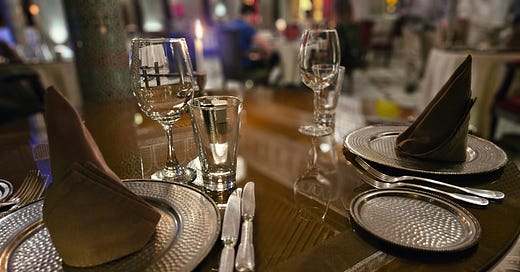




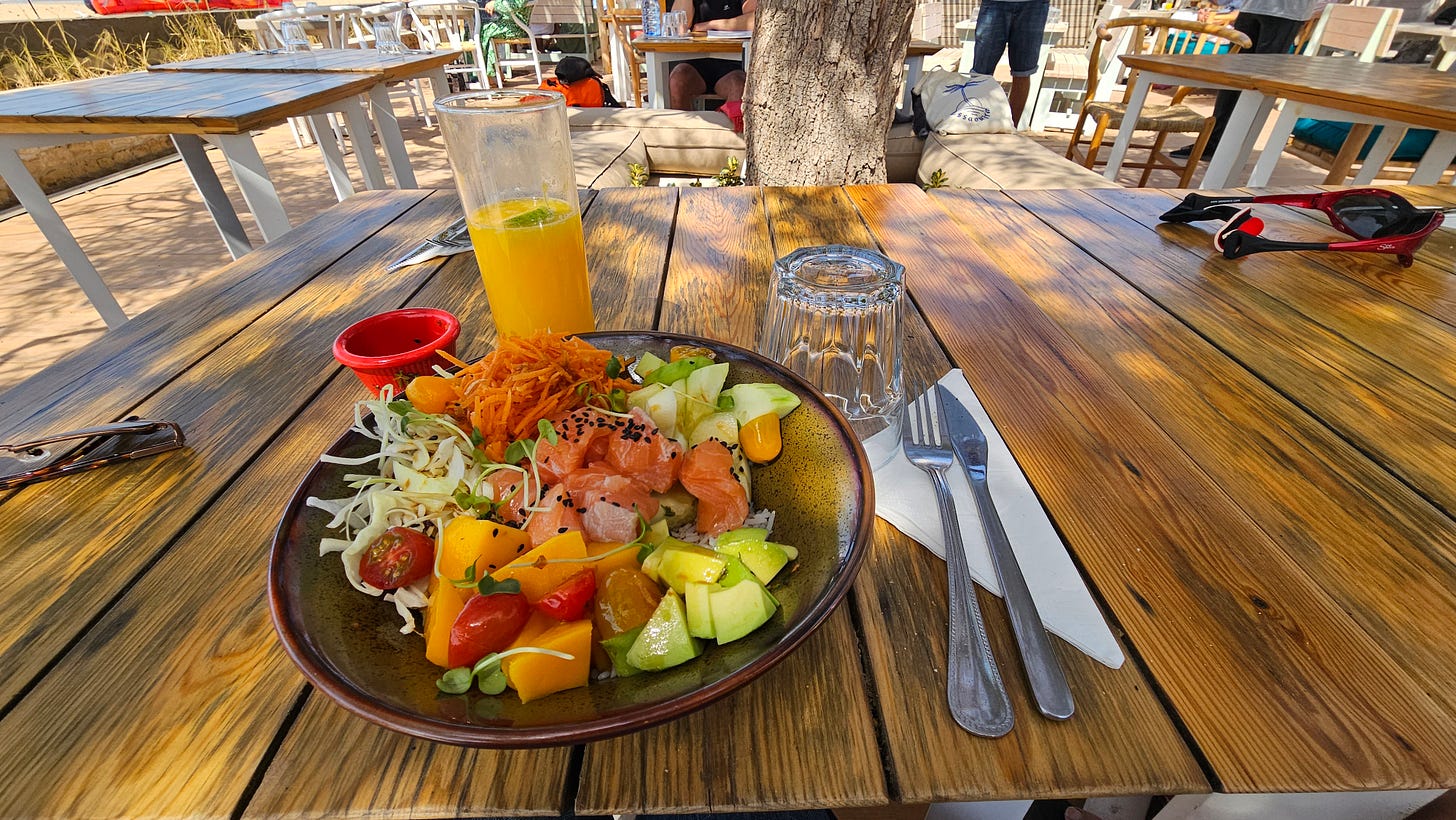


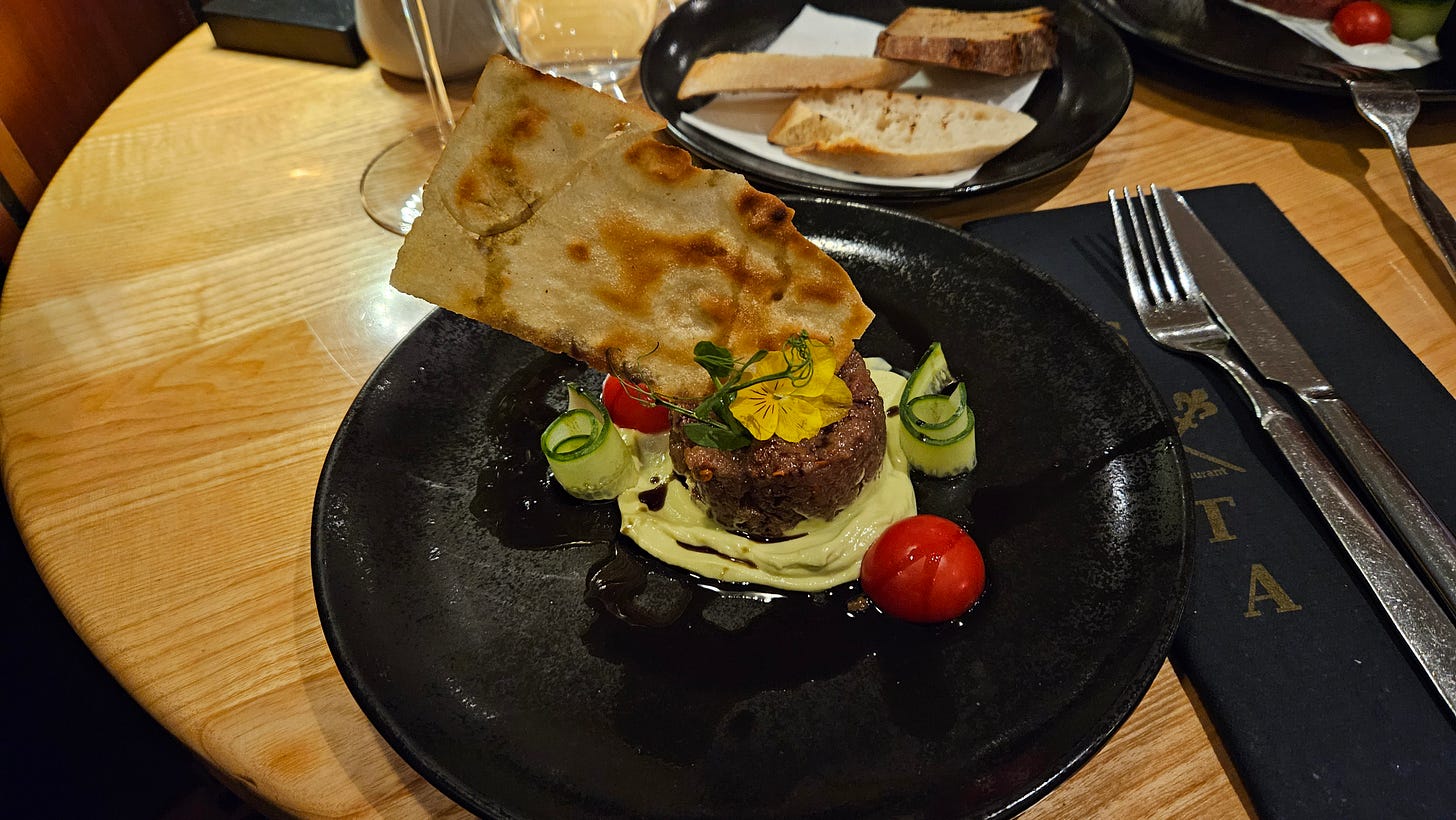
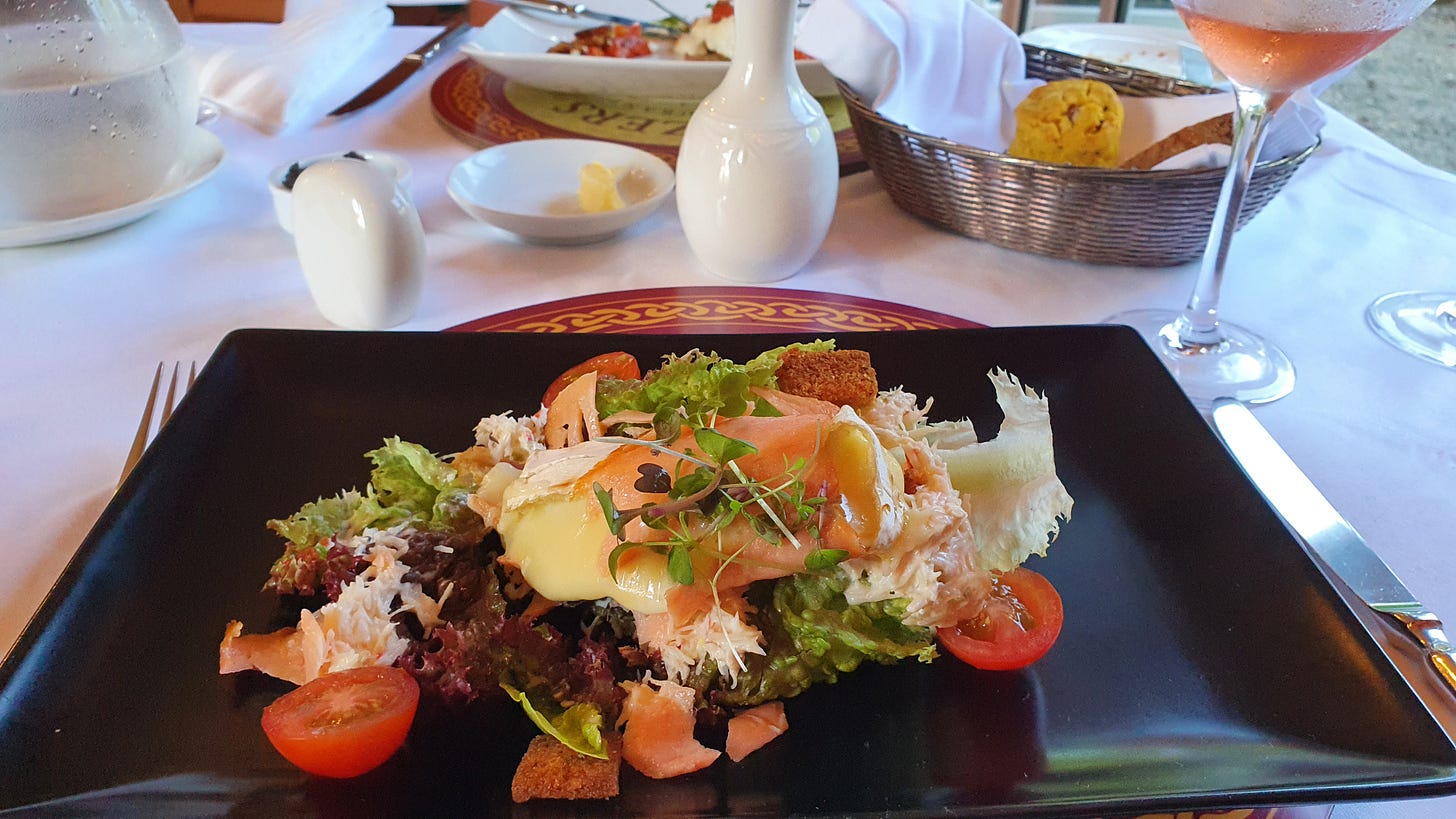

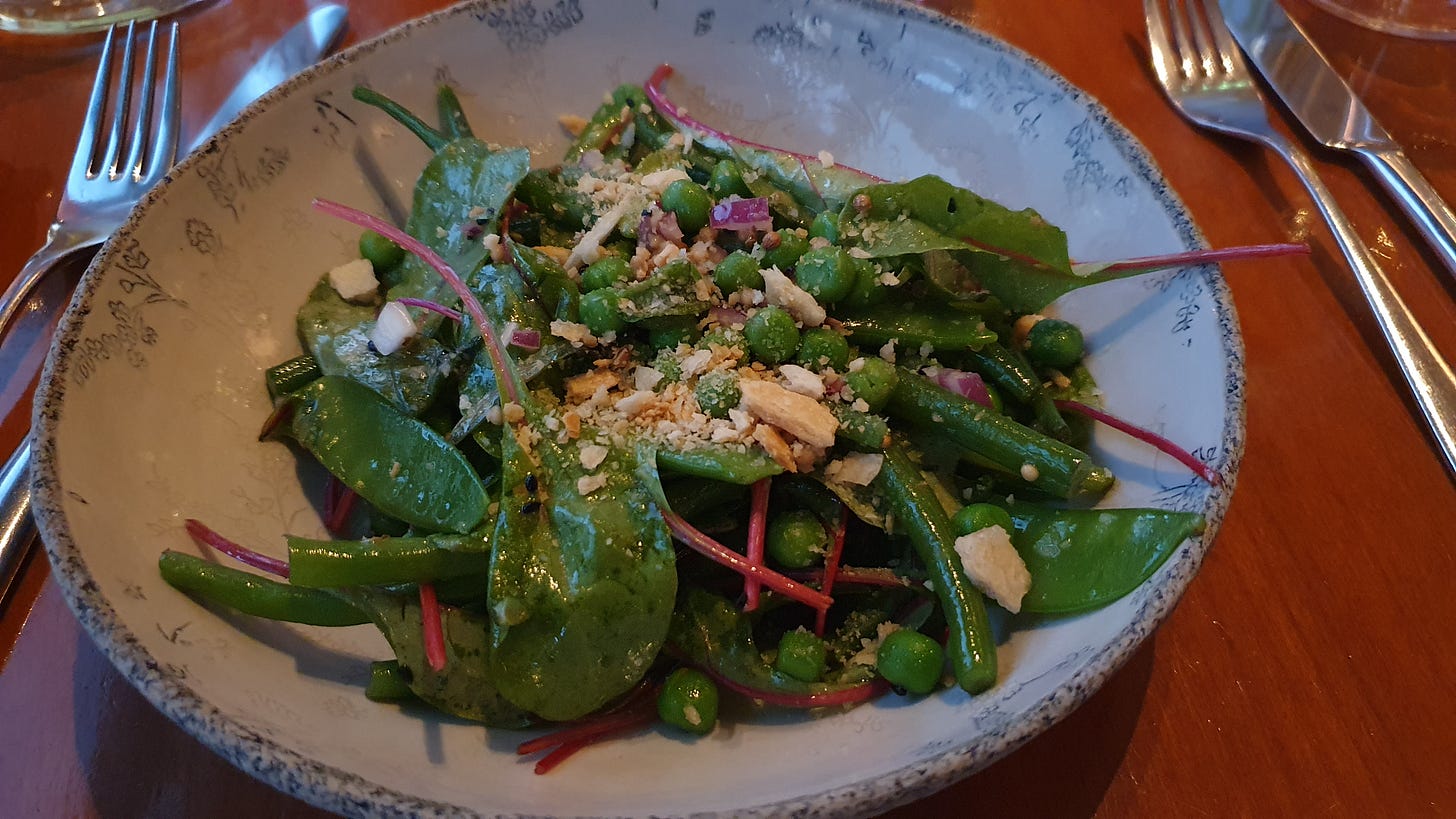

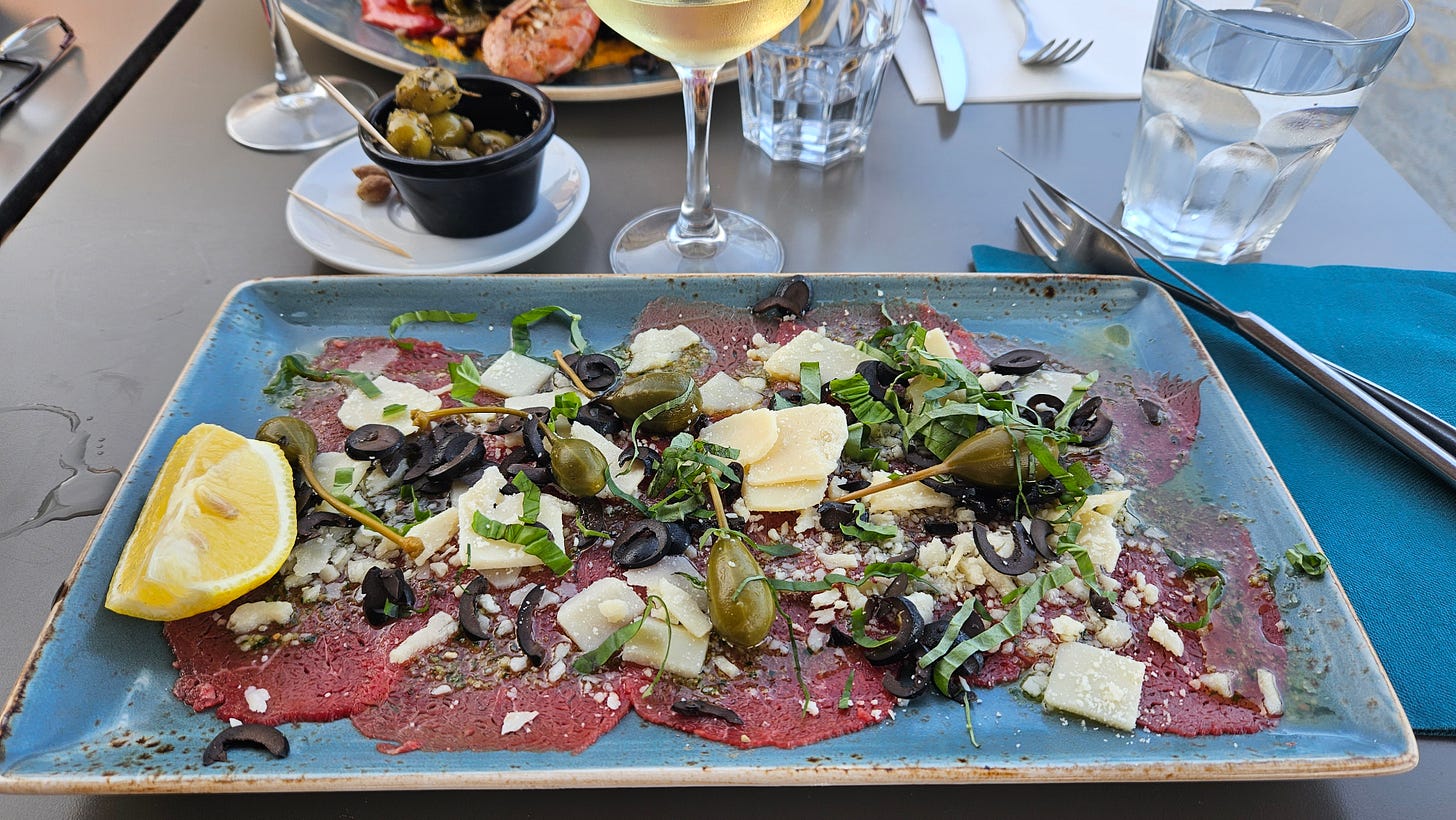
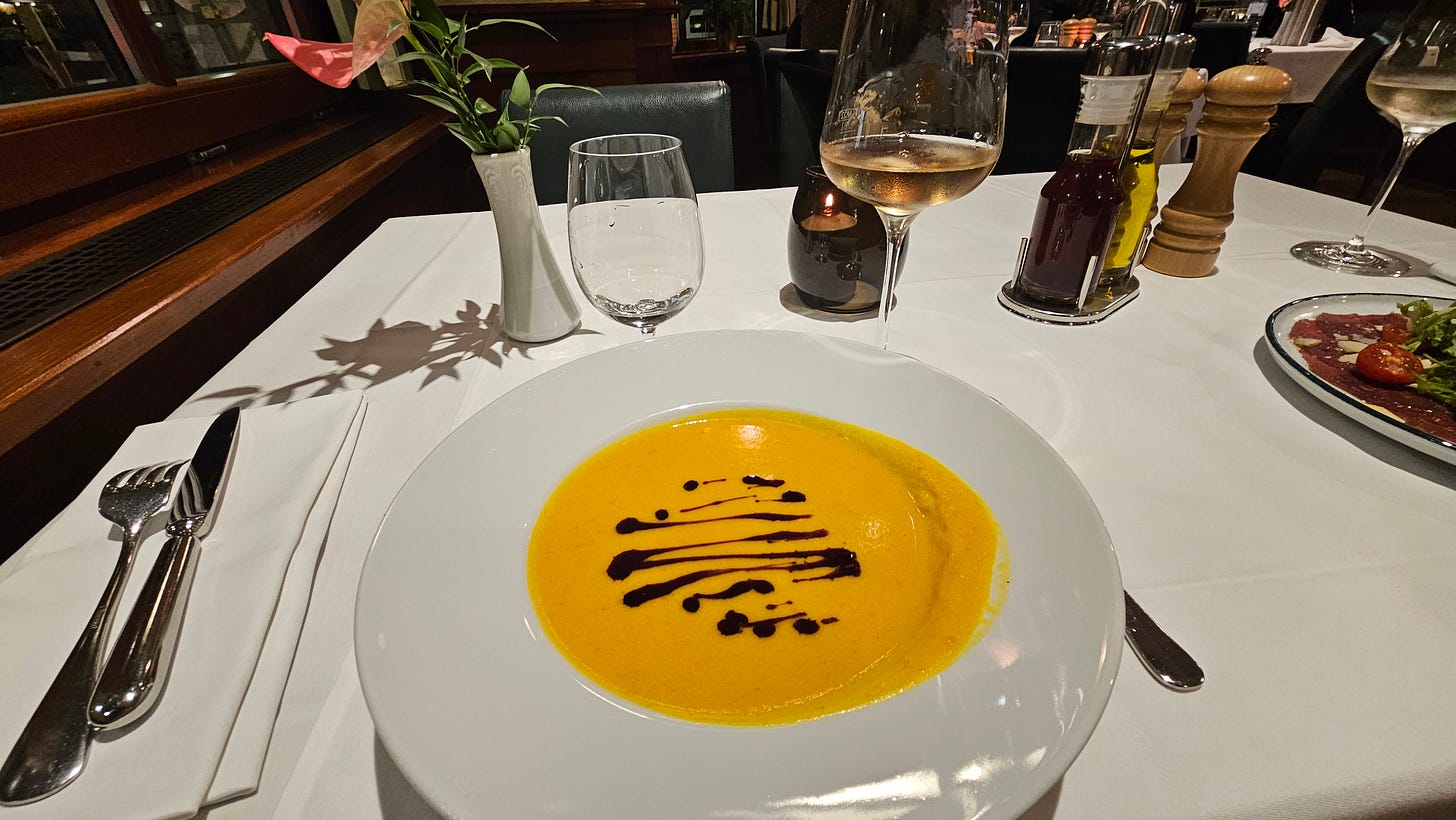
The Italian I lived with for 25 years in Rome always ate spaghetti with a spoon to roll it up in. But many Italians roll up it up in the bowl and then kind of shovel in their mouths. Fortunately most restaurants have a special spray or talcom powder to treat oil spots on ties or blouses!